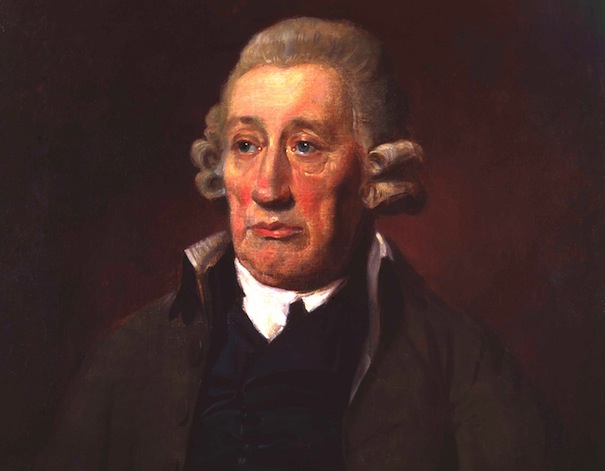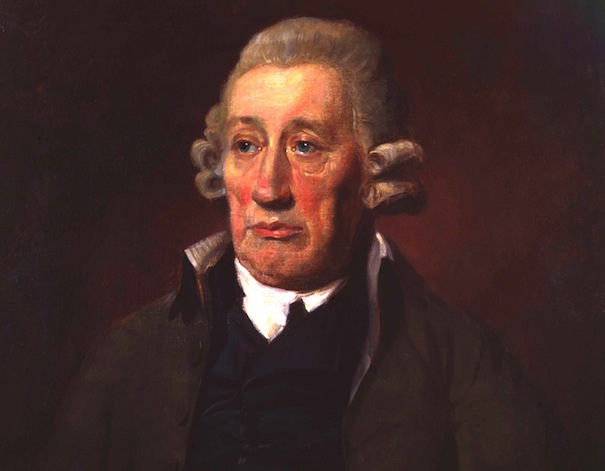
Ever wondered why there’s a school in Broseley called John Wilkinson? Or why the town played such a key role in the Industrial Revolution? In a newly published leaflet Broseley Local History Society and metallurgist Richard Sells delves deeper into the life and achievements of John ‘Iron Mad’ Wilkinson, the 18th century ironmaster, inventor and entrepreneur and one of Broseley’s most colourful figures….
John Wilkinson started life inauspiciously in 1728, born in a cart as his mother was on her way to market in Workington, Cumbria – perhaps an early indicator of how he’d make his presence felt as he went through life.
The adult Wilkinson was involved from the start in the ‘new’ iron industry, eventually operating nine ironworks including the New Willey Ironworks near Broseley, which was established in 1757. He was a man of huge energy and foresight, the ultimate inventor and entrepreneur. His 88-acre site at Bradley near Wolverhampton became the first integrated ironworks in the world and included everything necessary for iron production, from blast furnaces to canals and housing for his workers, earning him the sobriquet the ‘Father of the South Staffordshire Iron Industry’. He was also a major force behind the construction in 1779 of a certain bridge across the Severn linking Broseley with what is now the town of Ironbridge.
A finger in many pies
Despite being ‘mad on iron’ Wilkinson did not confine his interests to the iron industry. He had investments in copper and lead mines, chemical plants, canals and banking, and is famed for his work in developing cannon to be more accurate and safe. He even took advantage of the government’s inability to produce enough copper coinage to meet demand and began to mint his own trade tokens depicting his own head. Legend says that a house in Broseley’s Church Street, The Mint, may have been the actual place of production.
His inventions were wide ranging, one of the most significant being an iron boat which was launched at Willey Wharf. To the amazement of the many sceptics, it actually floated. The event was captured, in Wilkinson’s own words, in John Randall’s History of Broseley and its Surroundings “Yesterday week my iron boat was launched; it answers all my expectations, and has convinced the unbelievers who were 999 in 1,000.” In fact, so many of the applications we take for granted today were invented by Wilkinson that it is extraordinary that one man could make such an impact on England’s industrial development.
Engineering change
Wilkinson’s most significant impact was with his developments in engineering accuracy and in metallurgy. His success in establishing accurate machining was crucial in the development of James Watt’s steam engines, Richard Trevithick’s high pressure steam engines, and George Stevenson’s Rocket, which revolutionised transport.
Wilkinson had various homes, such as The Lawns in Broseley, which was his headquarters, and Castlehead in Morecambe Bay, which he built as his retirement home. He died a very wealthy man in 1808 and his body was placed – perhaps unsurprisingly – in an iron coffin.
John Wilkinson was one of the great men of the industrial revolution as well as being an immensely successful entrepreneur, and industry owes him a huge debt of gratitude.
Extracted from a new leaflet by Richard Sells; copies available from Freemans of Telford Ltd. To find out more, email john.freeman1@btconnect.com or phone 01952 586666.






